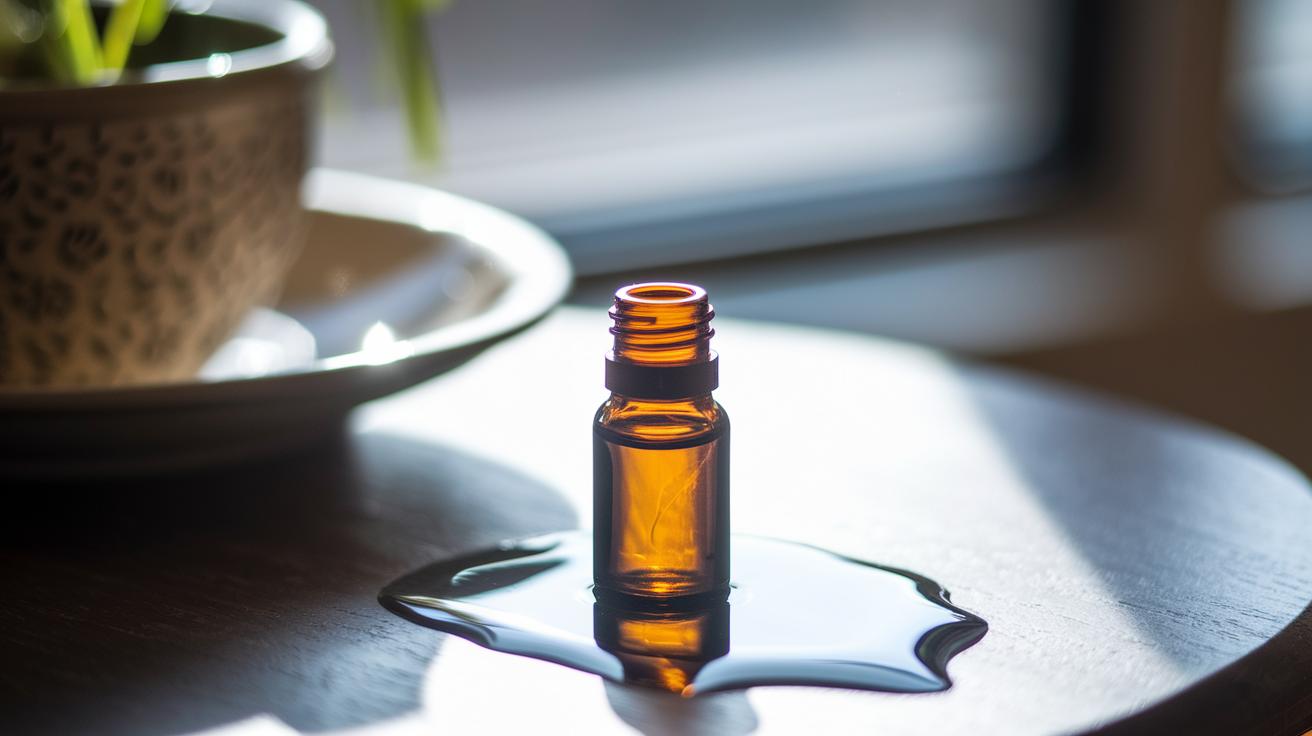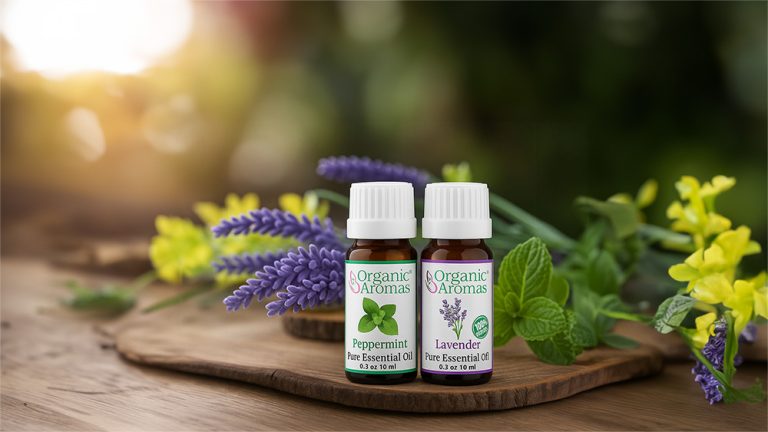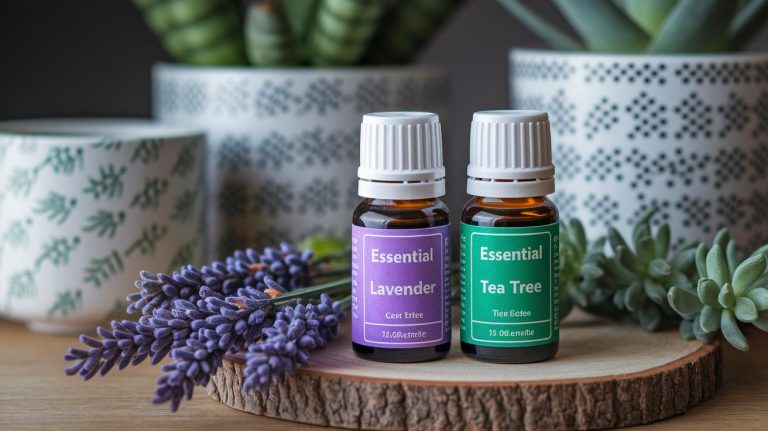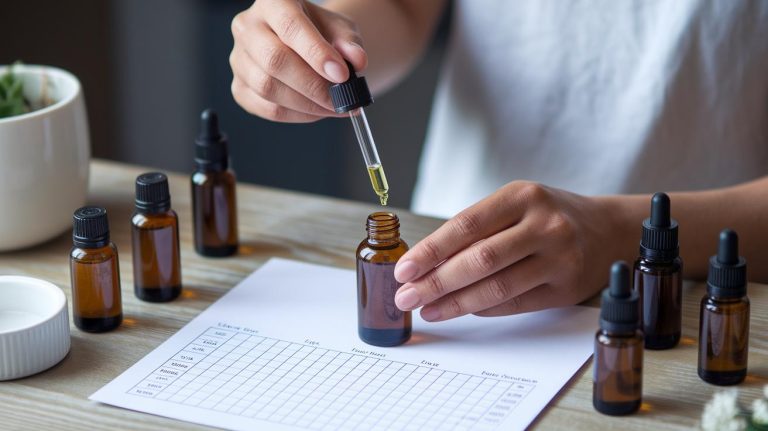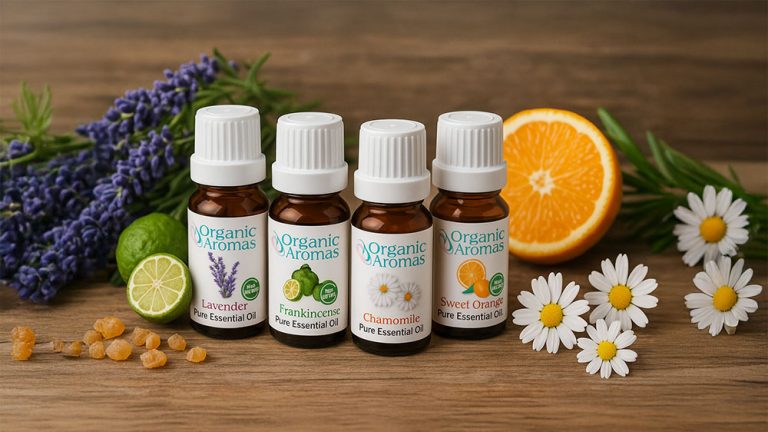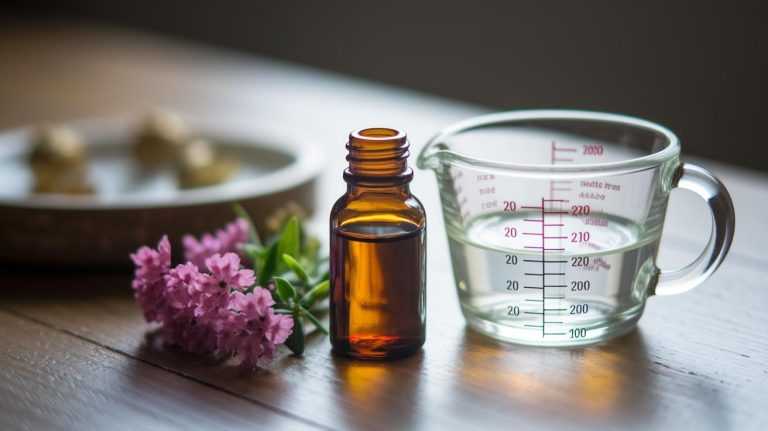5 How to Dilute Essential Oils Without Worry
At Organic Aromas, we believe in mindful self-care rituals. Ever thought you could dab pure Lavender essential oil (a concentrated plant extract) onto your skin without a second thought?
Unblended oils can tingle or even leave your skin red. And what’s meant to soothe ends up causing discomfort.
But when you mix a few drops of essential oil with a carrier oil (a neutral oil that helps spread the scent), like jojoba or fractionated coconut oil, the aroma floats softly over your skin and feels calming. This gentle blend keeps your skin happy and your senses delighted.
And a little really does go a long way.
In this guide, we’ll share five simple dilution methods so you can enjoy soft, safe, steady aromas without any worry.
Dilution Essentials: Overview & Importance
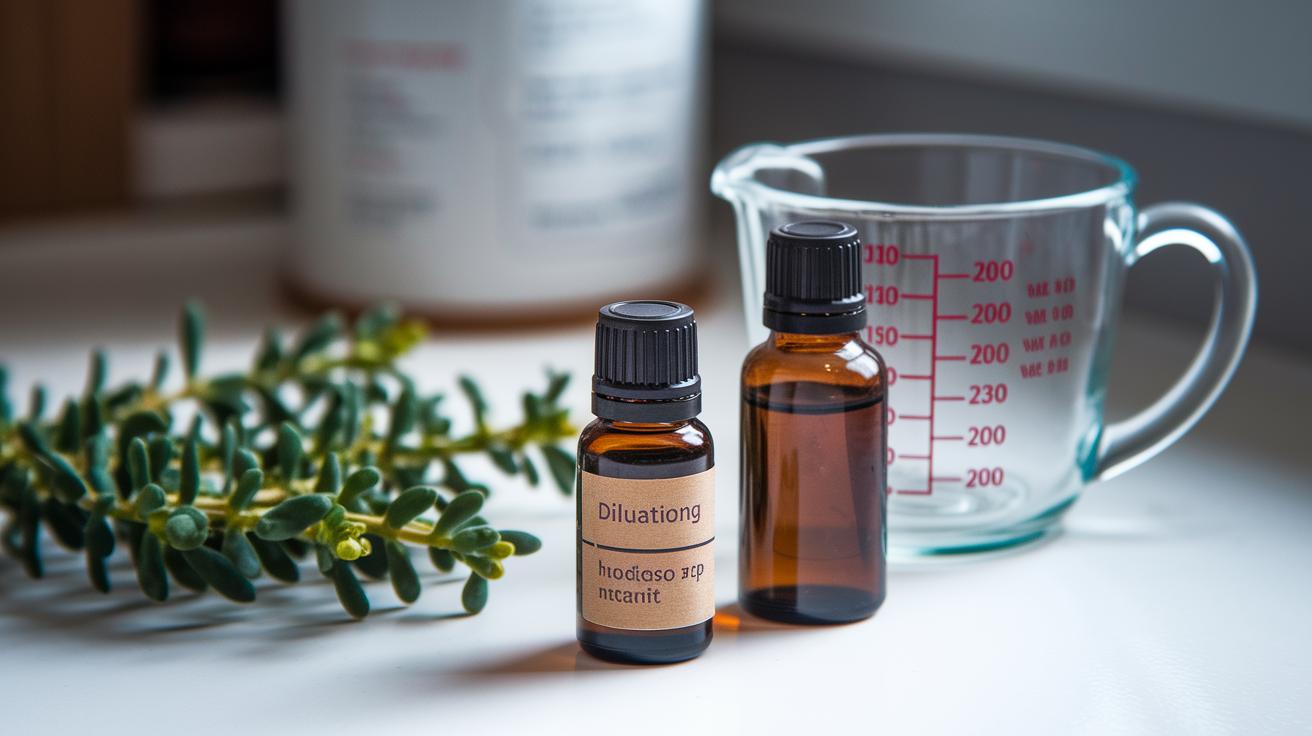
At Organic Aromas, dilution is blending pure essential oils (concentrated plant extracts) with a carrier oil (a gentle base oil) to soften their strength. Have you noticed how raw peppermint oil can tingle on your skin? Gentle blends make every drop feel soothing and safe to breathe. Calm.
When you mix drops of oil with jojoba or fractionated coconut oil (light, odorless oils), the scent drifts more evenly. It also slows evaporation so a few drops send a steady mist of aroma around your room for hours. Wait, a little goes a long way.
Here are the key benefits of proper dilution:
- Reduces the chance of redness or rash on sensitive skin
- Helps you avoid long-term sensitivity from repeat use
- Balances the therapeutic effect so you feel the benefits without harm
Whether you’re adding oils to a massage or a bubble bath, safe oil use starts with the right proportions. To find exact percentage guidelines, see the “Dilution Ratios by Use Case” section. For help with droppers, scales, and charts, check “Precision Dilution.” When you’re ready to create your own blends, explore our topical and bath recipe sections.
Carrier Oil Selection: Best Oils for Diluting Essential Oils
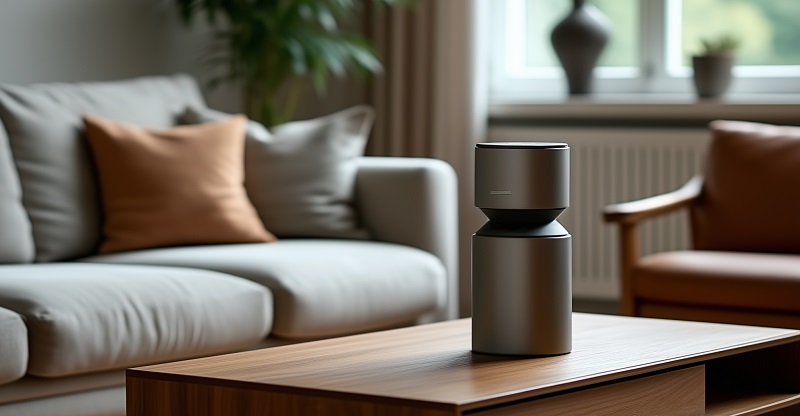
Carrier oils help your essential oils disperse (spread out), slow evaporation (drying out), and feed your skin with fatty acids and vitamins. Picking the right carrier makes your blend feel smooth, absorb quickly, and support your skin’s needs.
Here are our top picks:
Olive oil: Rich in antioxidants, olive oil feels silky on your skin but can be a bit heavy. It’s perfect for dry patches and full-body care.
Jojoba oil: This oil mimics your skin’s natural oils. It’s non-greasy, absorbs fast, and helps calm inflammation (swelling). That makes it ideal for facial blends.
Coconut oil: Solid below 76°F (24°C), coconut oil melts on contact with your skin’s warmth. It adds a soft sheen and even has antibacterial benefits.
Fractionated coconut oil: Always liquid and odorless, this um, oil stays fresh longer. It’s great for massage blends, and it won’t clog pores.
Sweet almond oil: Lightweight and non-comedogenic (won’t block pores), sweet almond oil soothes dry or irritated skin and can help reduce scars.
Grapeseed oil: Thin and fast-absorbing, grapeseed oil leaves a silky touch without feeling heavy. Perfect for body rubs when you’re on the move.
Sunflower oil: Absorbs quickly and helps balance your skin’s moisture.
Avocado oil: Rich and protective, avocado oil is a go-to for very dry or mature skin.
When you choose your carrier oil, think about viscosity (thickness), absorption rate, nutrient profile (like vitamin E), shelf life, and how it works with your skin. Looking for quick absorption? Reach for a thinner oil like grapeseed. Want extra nourishment? Try avocado or olive. And always store your blends in a cool, dark place so they stay fresh.
5 How to Dilute Essential Oils Without Worry
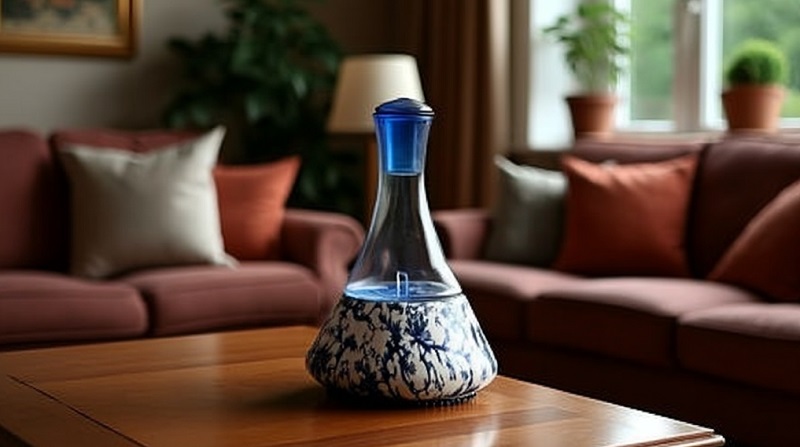
Grab a small pipette (draws tiny oil drops), a graduated syringe (measures liquid volume), or a mini digital scale (weighs with precision). These simple tools keep each blend steady and safe. It’s like having a little measuring team in your hands.
Standard rule of thumb: 20 drops of most essential oils add up to about 1 mL. Viscosity (thickness) changes that number a bit. Thinner oils flow faster. Thicker oils take their time.
Try these easy formulas:
- 1 drop per tablespoon (15 mL) ≈ 0.5% dilution
- 2 drops per teaspoon (5 mL) ≈ 2% dilution
Next, keep a chart or a little notebook by your mixing station. Jot down your carrier oil volume and drop count. It feels calming to see your recipe at a glance.
| Volume | Drops for 1% | Drops for 2% |
|---|---|---|
| 5 mL (1 tsp) | 1 | 2 |
| 15 mL (1 Tbsp) | 3 | 6 |
You can also use any free dilution calculator. Just plug in your target percent and carrier oil amount. Then shake or stir gently. Consistent measures mean a worry-free, therapeutic mist.
Have you felt how a balanced mist soothes your space? Breathe. Relax.
Dilution Ratios by Use Case
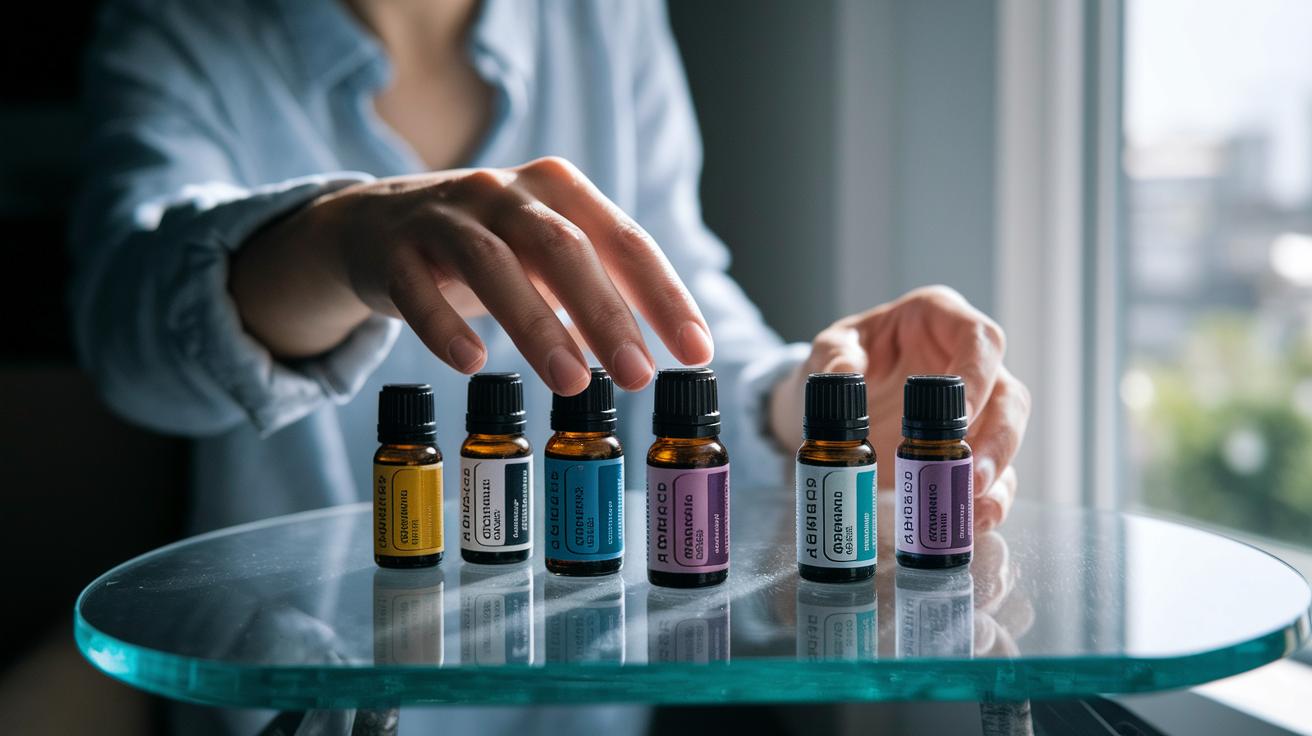
Ever wondered what makes a blend feel just right? Dilution (mixing pure essential oil with a gentle carrier oil) helps keep your skin happy and your senses calm.
Next, match your goal to the right ratio. Each use case has a simple range so your blend stays safe and effective. Think of it like adjusting a faucet to a gentle flow, enough to enjoy the ripple without an overflow.
| Use Case | Recommended Dilution |
|---|---|
| First aid (wounds, bruising, pain relief) | 5–20% |
| Localized massage treatments | 4–10% |
| General body massage/relaxation | 0.5–3% |
| Facial blends | 0.2–1.5% |
| Body care and beauty products | 1–4% |
| Herbal and aromatherapy baths | 2–3% |
Pick a number near the middle for a balanced caress. Go lower for a softer hug or higher for a deeper effect. And always patch test by applying a small drop on your forearm and waiting 24 hours before wider use.
Breathe easy.
Special Dilution Guidelines: Children, Sensitive Skin & Seniors
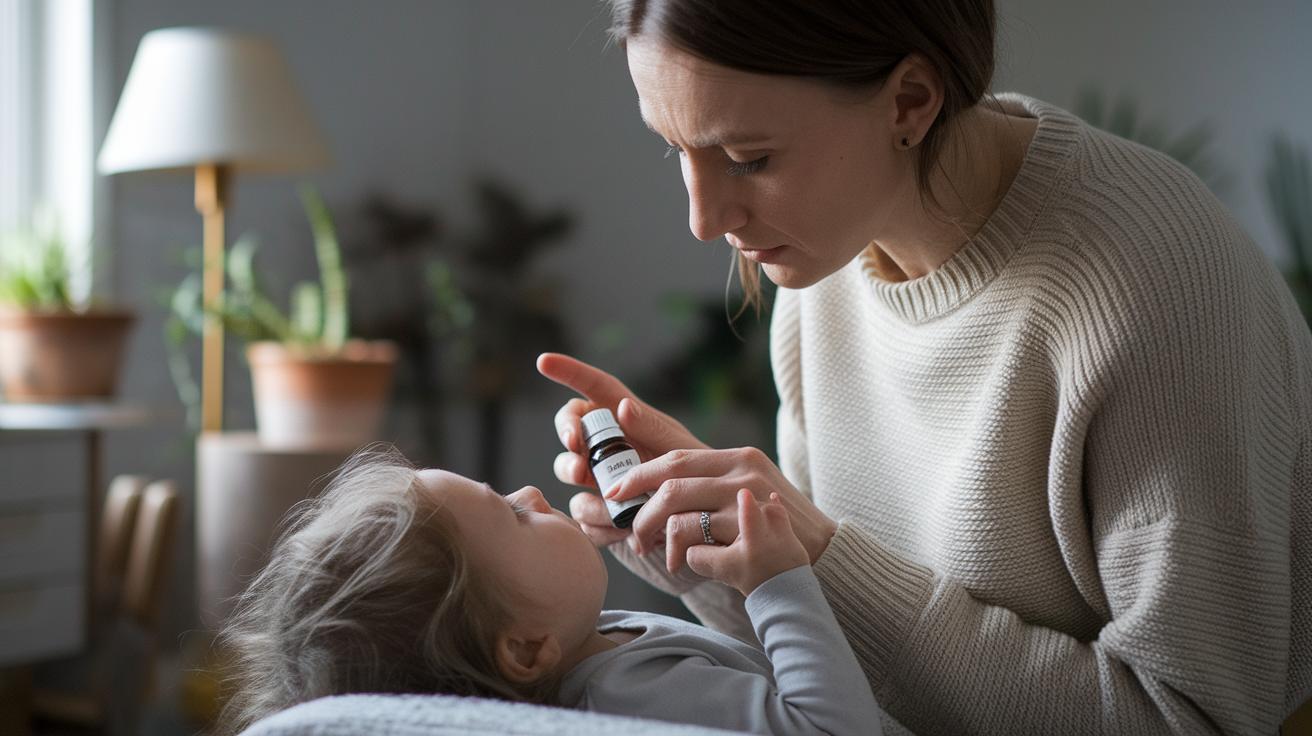
When you’re blending essential oil (pure plant extract) for little ones, elders, or anyone with extra-sensitive skin, their skin can feel that aroma intensely. So aim for just a whisper of scent without sacrificing safety. Have you ever noticed how a single drop can still fill a room?
Breathe. Relax.
Here’s the simple guide:
- Children and seniors: use a 0.5–1% dilution (mixing a tiny amount of essential oil into carrier oil). That’s about 1 drop per 2 tablespoons (30 mL) of gentle plant oil like jojoba or sweet almond.
- Sensitive or reactive skin: stick to 0.2–0.5%. For a facial serum (light skin treatment), mix 1 drop in 1½ tablespoons (22 mL) of jojoba oil.
- Always do a patch test: apply a small dab on your inner forearm and wait 24 hours. No redness? You’re good to go.
- Discontinue at any sign of itching, burning, or rash. Gently wash the area with plain carrier oil and give your skin a break.
They say less is more, um, and that’s spot on for delicate skin. In truth, fewer drops deliver a gentler scent and kinder touch. Keep a little notebook by your oils so you can always capture that perfect, easygoing blend.
Diffuser Dilution Techniques: Water, Nebulizers & Cool Mist

Whether you’re using an ultrasonic diffuser, a cool mist model, or a nebulizer (how a fine mist delivers undiluted essential oils), the way you mix your oils makes all the difference. Here’s how to keep your mist steady, your room balanced, and your diffuser happy.
Oils and water don’t naturally want to mingle. Um, to help them dance together, add a solubilizer (a mixing helper) like aloe vera gel, liquid Castile soap, or even a splash of alcohol. Then give your bottle a good shake. You’ll see tiny oil droplets floating freely in your diffuser tank, ready to fill your space with a smooth aroma.
Using an ultrasonic diffuser is simple.
- Pour room-temperature water up to the fill line.
- Add essential oil drops, no carrier oil (oil used to dilute essential oils), just undiluted drops based on your desired strength.
- Run it for 15-30 minutes, then let it rest.
That on-off rhythm helps your room fill with gentle mist without overloading the air.
Cool mist diffusers ask for a precise water-to-oil ratio, so follow the maker’s instructions. Aim to keep indoor humidity around 20-30%. Too much moisture can invite mold. Too little can leave your sinuses dry. Drop your oils into the water chamber, replace the lid, and switch it on. You’ll hear a soft hum as ultrasonic waves break each drop into a quiet cascade.
Nebulizing diffusers (how a fine mist delivers undiluted essential oils) send pure oil microdroplets straight into the air, no water or mixer needed. Use only undiluted essential oils and clean the glass reservoir weekly to avoid clogging. Deep breaths of pure aroma can support clarity, focus, and calm. Curious? Learn more about proper setup with a nebulizing essential oil diffuser.
Keep these simple tips in mind:
- Clean between blends to preserve each aroma’s integrity.
- Use short bursts (15-20 minutes) so your nose stays fresh.
- Refill water daily, and dry the tank when you’re done.
And remember, our oils are ethically sourced and 100% pure so you can breathe easy!
Sprays, Mists & Diffuser Blends with Diluted Essential Oils
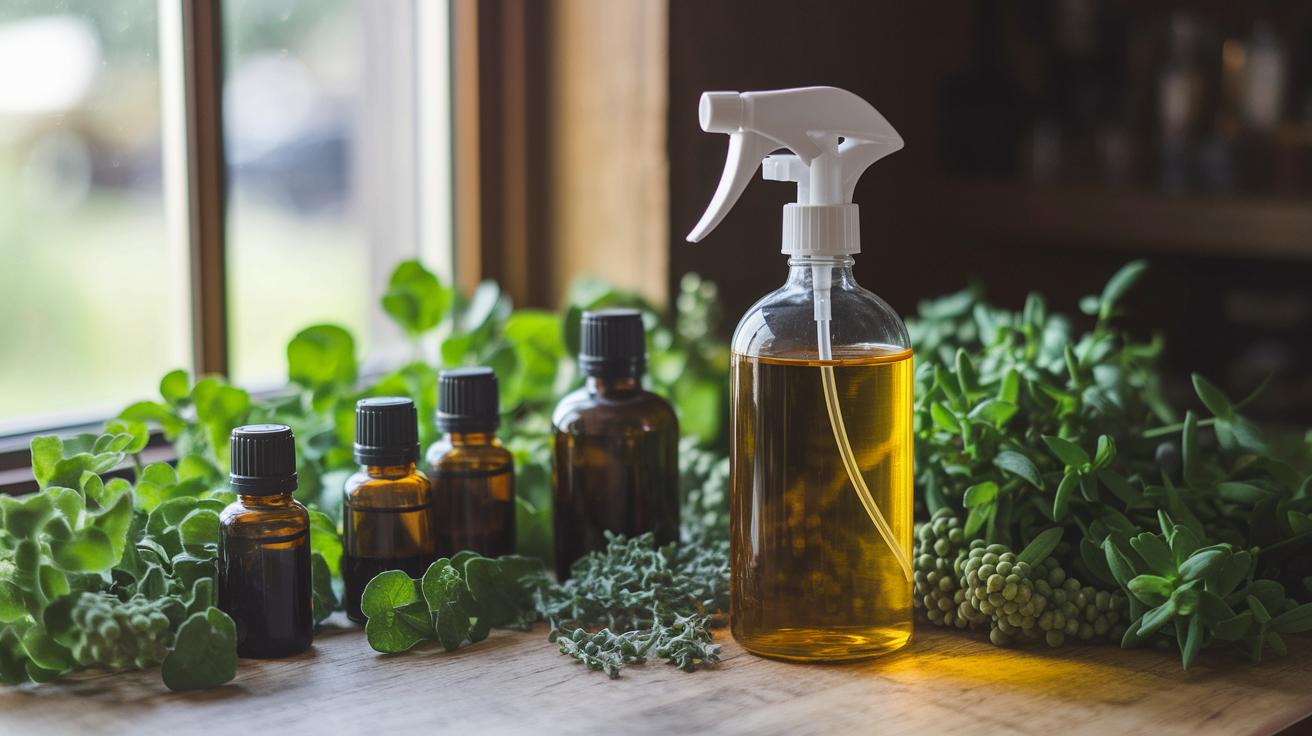
Bring pure aroma into every corner of your home. Curious how many drops you need? Check the “Dilution Ratios by Use Case” section.
Room Spray
- Supplies: dark glass spray bottle, filtered water, alcohol (vodka or rubbing alcohol) and your favorite essential oils
- Steps:
- Pour in the alcohol first. Alcohol acts as a solvent (it helps oil and water blend)
- Add 10-15 drops of essential oils
- Top off with water and close the sprayer
- Shake well, then mist into the air or over curtains
- Result: an instant burst of fresh mist
Linen & Pillow Mist
- Supplies: 2-4 oz spray bottle, distilled water, solubilizer (gentle mix that helps oil blend with water like aloe vera gel or liquid Castile soap) and a soothing lavender-chamomile blend
- Steps:
- Combine the solubilizer and essential oils in the bottle
- Fill with distilled water
- Close and shake vigorously
- Ritual: lightly spritz bedding, pillows or towels before bedtime for a calm, cozy moment
Reed Diffuser Solution
- Supplies: small vase or bottle, rattan reeds, carrier base (fractionated coconut oil or dipropylene glycol which carries scent) and essential oils
- Steps:
- Pour the carrier base into your container
- Stir in 15-20 drops of essential oils with a glass stir rod
- Insert the reeds and let them soak for 10 minutes
- Flip the reeds to refresh the aroma
- Tip: place in a low-traffic spot and flip reeds every few days
Natural Cleaning Spray
- Supplies: 16 oz spray bottle, white vinegar or apple cider vinegar, filtered water and fresh oils like lemon, tea tree or eucalyptus
- Steps:
- Pour vinegar into the bottle
- Add 10-20 drops of essential oils
- Fill the rest with water and secure the sprayer
- Shake before each use and wipe down counters, sinks or glass
- Benefit: a simple, fresh-clean routine without harsh chemicals
Shake each bottle well before spraying. Store sprays away from heat and direct light so your blends stay vibrant and effective.
Breathe. Refresh. Enjoy.
DIY Topical & Bath Blends: Roll-Ons, Massage Oils & Bath Preparations
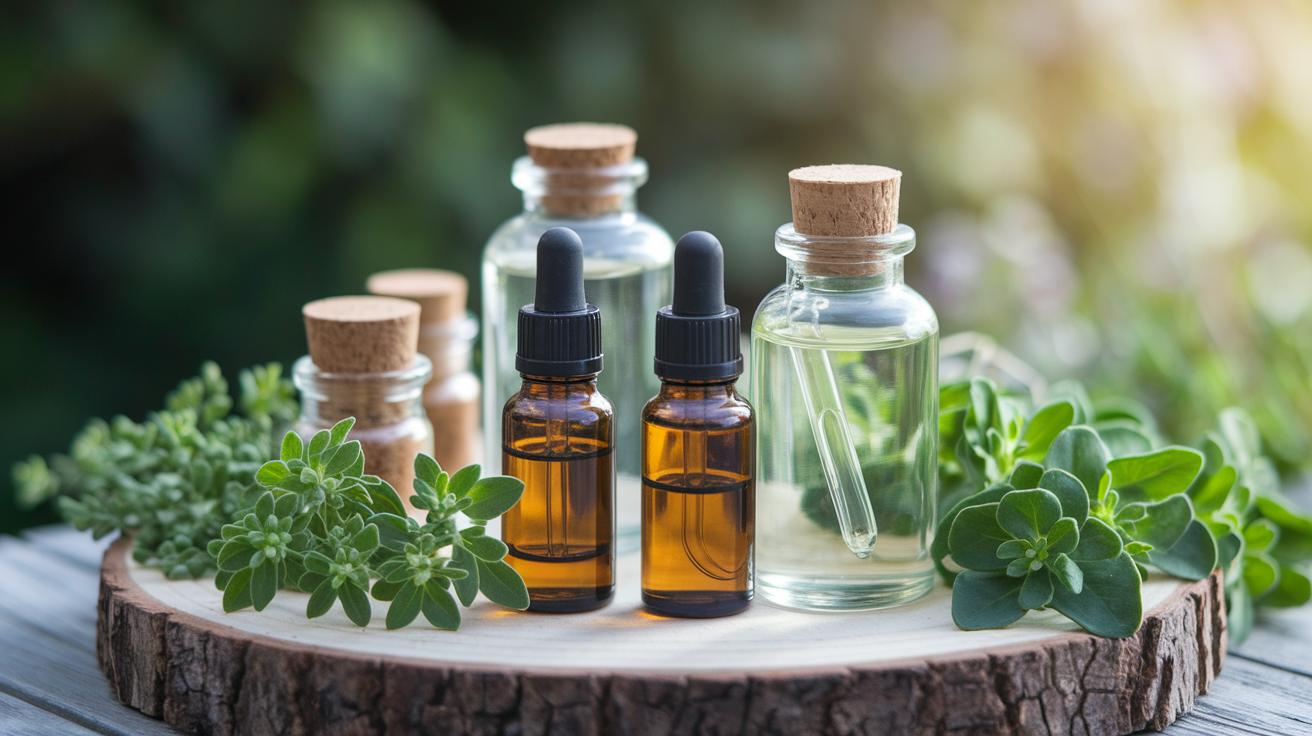
Mixing your own roll-ons, massage oils, bath elixirs and warm compresses can feel like a mini spa escape. Once you pick your carrier oils and follow a simple order, you’ll have your blends ready in minutes. First, peek at “Dilution Ratios by Use Case” for the right percentages. Then round up your supplies.
1. Roll-On Blends
Supplies:
- 10 mL amber glass roll-on bottle
- Pipette
- Funnel
- Carrier oil (jojoba or fractionated coconut)
Steps:
- Snap the rollerball into place.
- Fill the bottle about three quarters full with carrier oil.
- Add essential oils drop by drop with your pipette.
- Seal and roll between your palms to mix.
- Label with the blend name and date.
Usage:
- Roll onto wrists, temples or the back of your neck. Have you tried keeping one in your bag for a quick calm moment?
2. Massage Oils
Supplies:
- 50 mL glass bottle with pump or dropper
- Carrier oil (sweet almond or olive)
- Mixing bowl
- Stir stick
Steps:
- Warm the carrier oil gently in the bowl.
- Pour the warm oil into your bottle.
- Add essential oils, then cap and shake for 20 seconds.
- Test a small patch on your skin.
Tip:
- Store in a cool dark spot. Massage into shoulders, feet or any tense area. Think of it as a warm hug for your muscles.
3. Aromatherapy Bath Oils
Supplies:
- ¼ cup carrier oil (coconut or sunflower)
- Glass measuring cup
- Whisk
- Jar with lid
Steps:
- Pour carrier oil into the measuring cup.
- Whisk in essential oils until smooth.
- Transfer to your jar and seal tightly.
- Before you soak, swirl 1–2 teaspoons into warm running water.
Sensory:
- Picture yourself sinking into a silky, fragrant bath that ripples calm through your skin.
4. Compress Blends
Supplies:
- Cotton cloth or gauze
- Bowl of warm water
- Small dropper bottle
- Carrier oil (grapeseed)
Steps:
- Mix carrier oil and essential oils in your dropper bottle.
- Add 5–10 drops of that blend to warm water.
- Soak your cloth, wring lightly, then press it onto your sore spot.
Benefit:
- Let the gentle warmth or coolness ease tension and calm inflamed areas.
Jot down each blend’s ingredients and date so you can recreate your favorites. Keep a notebook handy for new ideas.
Breathe in the calm.
Your DIY ritual awaits.
Storage, Labeling & Safety Precautions for Diluted Essential Oils
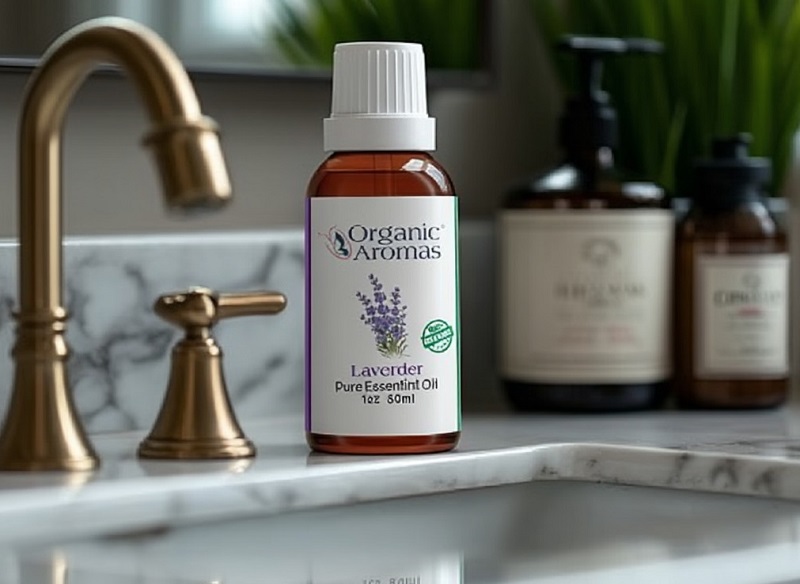
When you mix a batch of essential oils, it’s easy to lose track of what’s inside each bottle. So grab a fine-tipped marker and label every blend right after you make it. Write down the blend’s name and the oils you used. Note the date you mixed it, the concentration (for example, 2% oil in your carrier), and how you plan to use it with any special safety tips you need to remember. That way you’ll never guess if a bottle is for soothing tension or easing sore muscles.
Next, store your blends in amber or cobalt glass bottles at about 50 to 70°F. Have you ever wondered why dark glass matters? Light and heat speed up oxidation (when oils spoil). Dark glass slows that down so your blend smells fresh and powerful longer.
Also, pick bottles with child-resistant caps and leak-proof seals. Avoid plastic because it can leach chemicals into your oils and dull their aroma. A tight glass lid keeps air and moisture out so your scent stays crisp.
Keep an eye on how long each blend stays potent:
| Carrier Oil | Shelf Life |
|---|---|
| Fractionated Coconut | Up to 2 years |
| Sweet Almond or Olive | 6–12 months |
If a blend starts to smell flat or off, it’s time to make a fresh batch.
And remember these safety tips:
- Too weak (under-diluted) blends may not deliver the benefits you want
- Too strong (over-diluted) blends can irritate skin or cause sensitivity
- Always check your local cosmetic labeling rules for ingredient lists and usage directions
Labeling carefully and storing thoughtfully helps you enjoy every drop safely and confidently.
Final Words
We dove into dilution basics, mixing essential oils with carrier oils for safety and lasting benefits. Then we picked top carriers like jojoba and fractionated coconut and learned how to measure drops with pipettes or scales.
Next we laid out ratio charts for first aid, massage, baths, and special tips for kids or sensitive skin. You saw how to set up diffusers, sprays, roll-ons, and bath blends and store them the right way.
Ready to bring a calm spa vibe home?
You now know how to dilute essential oils with confidence and care for everyday aromatherapy bliss.
FAQ
What is the best carrier for diluting essential oils?
The best carrier for diluting essential oils is fractionated coconut oil for its light, nearly odorless feel. Jojoba, sweet almond, grapeseed or olive oil also work, chosen by skin type and texture.
What is the 30-50-20 rule for essential oils?
The 30-50-20 rule is 30 drops of essential oil, 50 drops of carrier oil and 20 drops of solubilizer (like alcohol or Castile soap) to help mix oils into water-based blends.
How to dilute essential oils with water?
Mix 1 cup (240 mL) of water, 1 teaspoon of solubilizer (alcohol or Castile soap) and 10–15 drops of essential oil. Shake well before each use.
How to dilute essential oils for a diffuser?
Fill the water tank with room-temperature water and add 3–5 drops of essential oil per 100 mL. Run 15–30 minute mist cycles as the device instructions recommend.
How to dilute essential oils for skin use?
Blend 1–3 drops of essential oil per teaspoon (5 mL) of carrier oil for a 1–2% mix. Always perform a patch test on a small skin area first.
How to dilute essential oils for hair?
Stir 2–4 drops of essential oil into 1 tablespoon (15 mL) of shampoo, conditioner or carrier oil. Gently massage into the scalp, leave for a few minutes, then rinse.
How to dilute essential oils to make a spray or air freshener?
Combine 15–20 drops of essential oil with 2 ounces (60 mL) of water and 1 teaspoon of solubilizer (like vodka). Shake before each mist.

